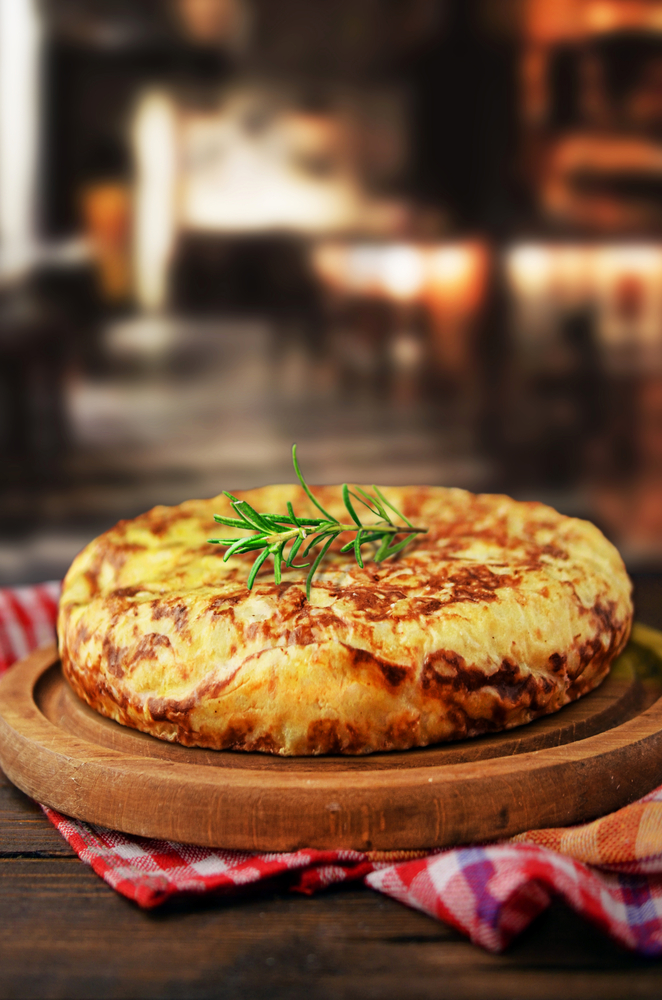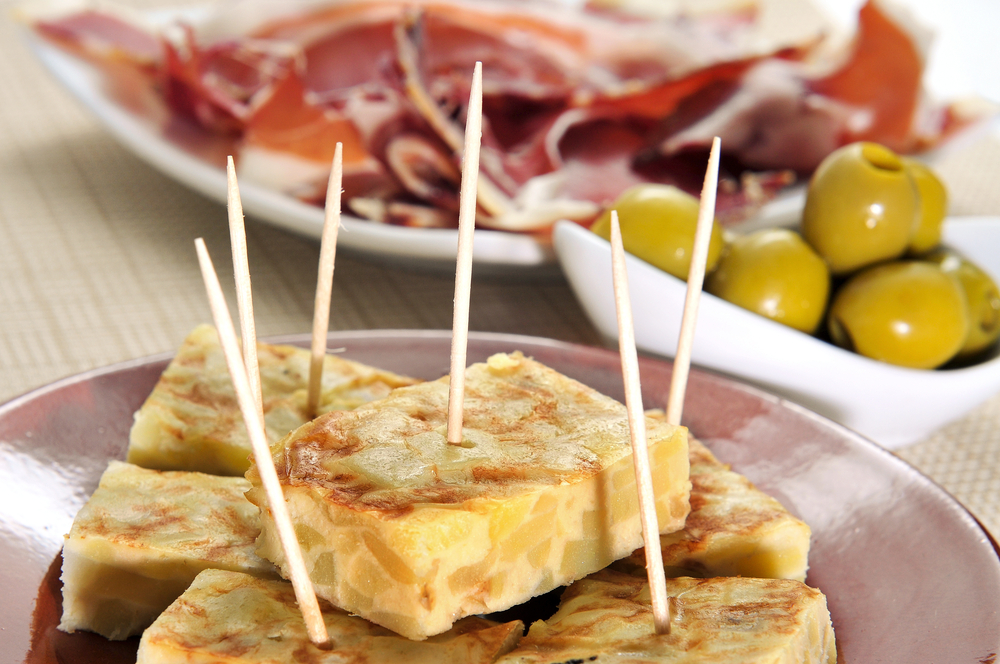Born out of necessity, the Tortilla Española, also known as the Spanish omelette, was originally deemed a ‘poor man’s’ dish. The creation’s simple, easily accessible ingredients of eggs and potatoes fed the impoverished rural citizens of Spain before rising to the esteemed title of ‘national dish’. Nothing will start your day on a higher note than this authentic Spanish treat, which will also sustain you while you explore this stunning country.
1.History
Although the ‘when and where’ of the birth of the Spanish omelette are not exactly known, it was first referenced in 1817 in a letter to the court of Navarre. The letter contained details of the poor conditions the people around Pamplona and the Ribeira were enduring. The less fortunate were forced to live off minimal provisions and would make a simple concoction of eggs, potatoes and breadcrumbs, hoping to feed as many people as possible. During Spain’s tumultuous years of civil unrest, the army also relied on this dish as a cheap way of feeding the troops a meal that would sustain them.
2.Simplicity at Its Best
True devotees of what is considered the original tortilla de patatas insist that the dish must only contain eggs, potatoes and olive oil, allowing for the purity of the ingredients’ flavours to come through. However, the introduction of onion has proven so popular that most Spanish omelettes will contain at least some. Of course over time more creative ingredients have been introduced to this versatile dish, including cheeses, chorizo and various vegetables.
The base of this dish is thinly sliced or diced potatoes, which are slowly sautéed in copious amounts of pure extra virgin olive oil. Once the potatoes are slightly softened, they are then added to a mixture of beaten eggs and returned to the pan. The tortilla de patatas is then pan fried and flipped to ensure even browning on both sides.
3.Eat Like a Spaniard
Although there are numerous regional variations of the Tortilla Española, the final result is always tasty and satisfying. The tortilla can be served as a slice or cut into bite-sized chunks, and can be eaten either hot or cold. The heartiness of the dish is due to its thickness – most are around 8cm thick! The key to a successful one is that the centre must remain slightly soft and juicy. The entire meal will traditionally include bread and sometimes fried pimientos de padrón on the side.
From a nutrition point of view, the Tortilla Española is a complete meal in itself. Packed full of protein, energy-producing carbs and heart-healthy antioxidants from the olive oil, no other dish can compare. When visiting Spain, there is no doubt that you’ll fall in love with this rich, hearty and delicious breakfast staple as much as you’ll fall in love with the country itself.











